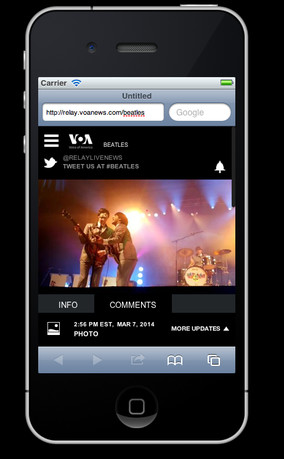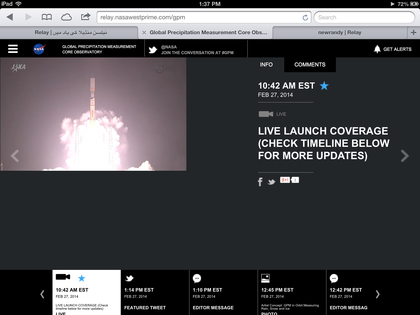
Relay, the mobile-first liveblogging platform, has announced upgrades including a function allowing reporters to add photos to an event via email, which has since been used in tests with Google Glass and NASA.
The US-government supported Broadcasting Board of Governors' (BBG) Office of Digital Design & Innovation (ODDI) released Relay as open-source software in December with the intent of recreating the liveblog for mobile.
"We know how powerful getting a great photo can be in journalism so we're excited to have that feature," Randy Abramson, director of audio and video products at the ODDI, told Journalism.co.uk. "The photograph is the most basic type of communication you can offer your audience; it's fast and you don't need a lot of bandwidth to transmit."
Journalists could already email text directly to a Relay liveblog, or upload media to Flickr, Soundcloud or YouTube with a hashtag, where the software would organise content into swipeable cards for the reader to browse.
However, following the updates, journalists can now email a photo directly into the system from their mobile device.
"We set up an event for the US state department and did a demo with USAID to see how it can be used with crisis response in Rwanda," said Abramson.
In a particularly innovative combination of technologies, Voice of America correspondent Carolyn Presutti recently tested the integration of Relay with Google Glass at an event to mark the 50th anniversary of the Beatles playing in America at the Washington Coliseum.
"The amazing thing about that event is that the Washington Coliseum is now a parking garage, it was freezing cold as part of this polar vortex thing that's going on," said Abramson. "There's no Wi-Fi, there's barely any electric power and this Beatles tribute group was performing. In those conditions we were still able to have a really great Relay event, she was sending videos and photos all through Google Glass."

A photo of Beatles tribute act Beatlemania, taken with Google Glass and used in a Relay event. Image courtesy of BBG.
Presutti hopes to continue experimenting with the two platforms in the future, said Abramson.
Also added to Relay's new capabilities is the option of highlighting the most newsworthy cards by placing at the front of the live blog, an option that came into play for a recent Nasa launch.
"If you're thinking about the NASA launch the star of the show is the launch itself," Abramson said. "All the other content that's filing behind the launch is important but we feel like the editor should have the the ability to highlight one piece of content that's most important at that particular time.
"Conversely there might be something that happened 45 minutes ago and it's not the most recent but it is the most important thing that's happened in the past hour and you can pin that piece of content to the front of the stack."

The relay event for a recent Nasa launch. Image courtesy of BBG.
In the coming months, Abramson hopes to better integrate audio cards, email and SMS alerts systems and smoother functionality before journalists take Relay to this year's World Cup in Brazil to test how it responds to events taking place over days or weeks.
Relay is available on GitHub.
Free daily newsletter
If you like our news and feature articles, you can sign up to receive our free daily (Mon-Fri) email newsletter (mobile friendly).









